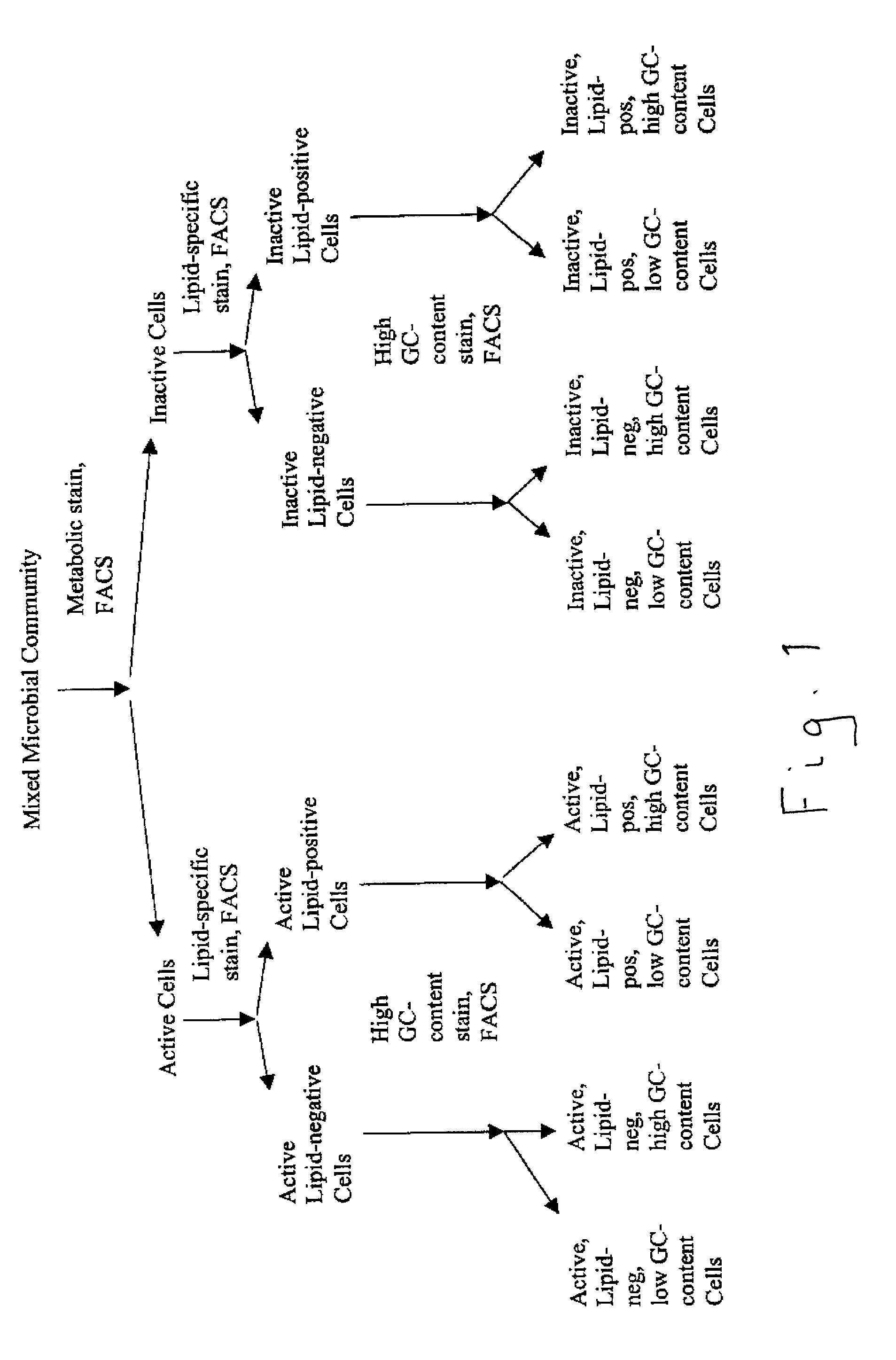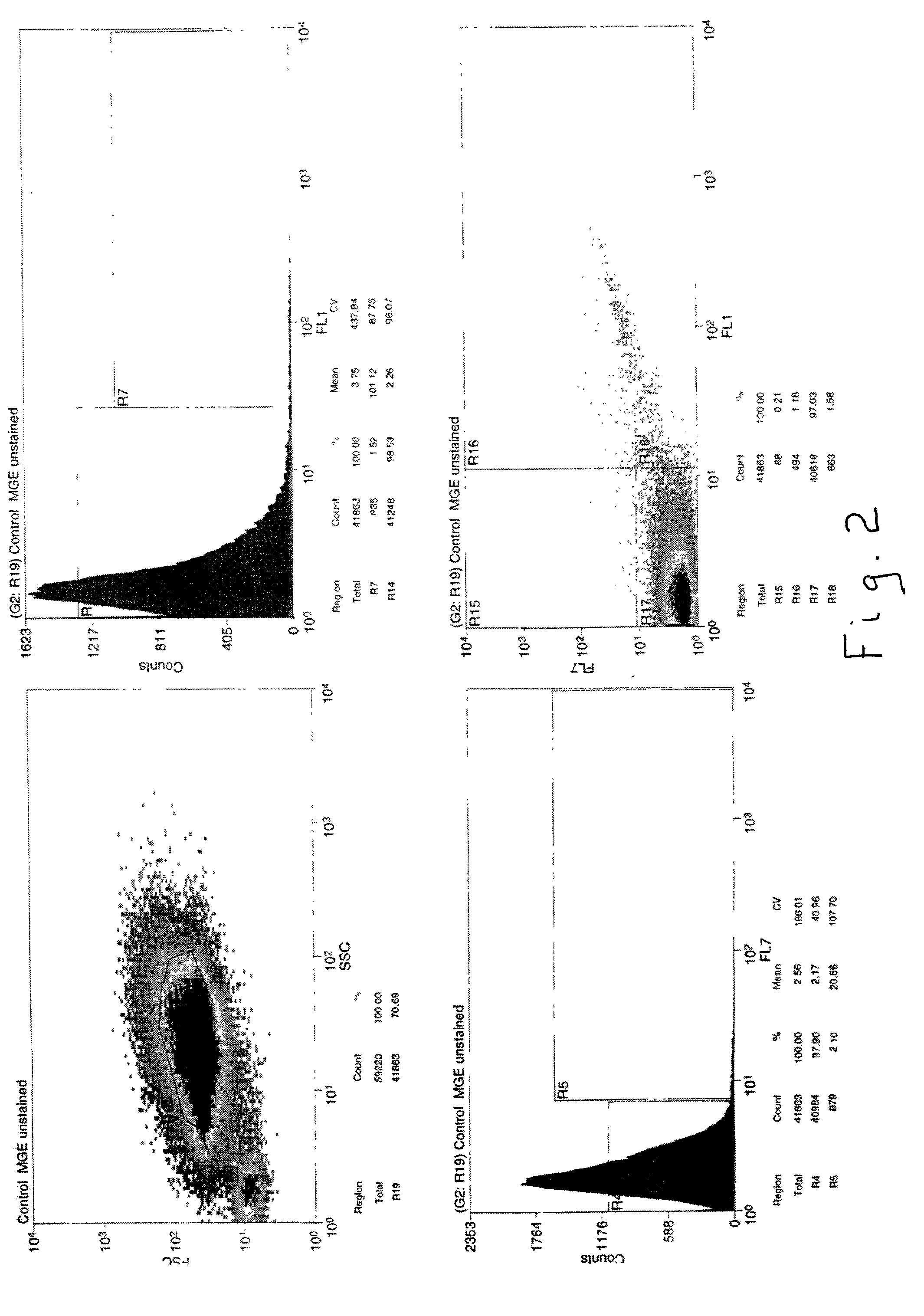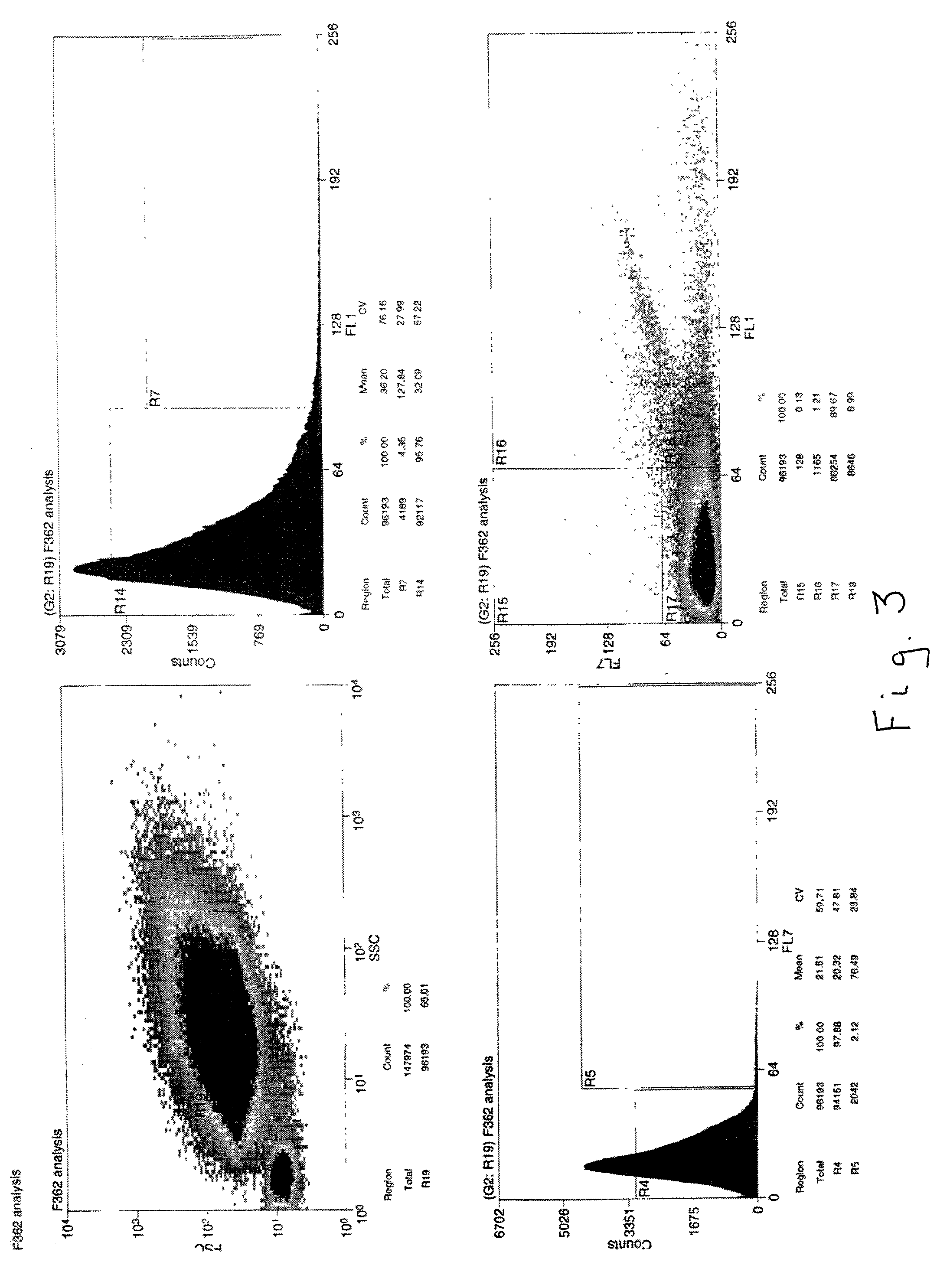Application of bioinformatics for direct study of unculturable microorganisms
a technology of bioinformatics and unculturable microorganisms, applied in the field of application of bioinformatics to enable the direct study of unculturable microorganisms, can solve the problems of lack of techniques for studying unculturable microorganisms, cultivation and cultivation-dependent techniques combined can rarely account for more than 100 total species in an individual soil sample, and gather very limited data
- Summary
- Abstract
- Description
- Claims
- Application Information
AI Technical Summary
Benefits of technology
Problems solved by technology
Method used
Image
Examples
example
[0029] An environmental sample derived from the saturated zone of a hydrocarbon-contaminated site was processed to obtain a cell suspension which was then subjected to flow cytometry / cell sorting after staining with the lipid-staining dye fluorescein DHPE to yield two populations of cells: low fluorescence and high fluorescence. It was found that about 12 to 14% of the total cell population was stained with this dye, but to varying degrees. The gating parameters of the cell sorting device were adjusted to stringent conditions to allow only the most intensely stained cells in the mixture, which comprised about 1% of the total cell population, to be separated as a discreet sub-population of bacterial cells. This mixture of cells subsequently was further sorted to isolate individual bacterial cells, which were then placed in individual test tubes / wells. The cells were lysed to release chromosomal DNA which was then subjected to PCR using a 10-mer oligonucleotide as a primer. The DNA fr...
PUM
| Property | Measurement | Unit |
|---|---|---|
| length | aaaaa | aaaaa |
| lengths | aaaaa | aaaaa |
| size | aaaaa | aaaaa |
Abstract
Description
Claims
Application Information
 Login to View More
Login to View More - R&D
- Intellectual Property
- Life Sciences
- Materials
- Tech Scout
- Unparalleled Data Quality
- Higher Quality Content
- 60% Fewer Hallucinations
Browse by: Latest US Patents, China's latest patents, Technical Efficacy Thesaurus, Application Domain, Technology Topic, Popular Technical Reports.
© 2025 PatSnap. All rights reserved.Legal|Privacy policy|Modern Slavery Act Transparency Statement|Sitemap|About US| Contact US: help@patsnap.com



